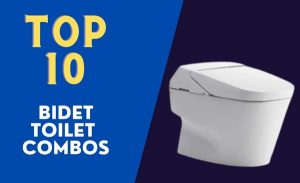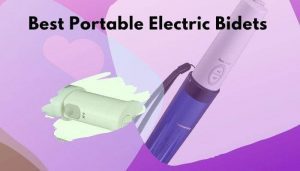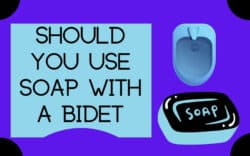How to clean the bidet nozzle and bidet Filter to improve bidet water pressure?
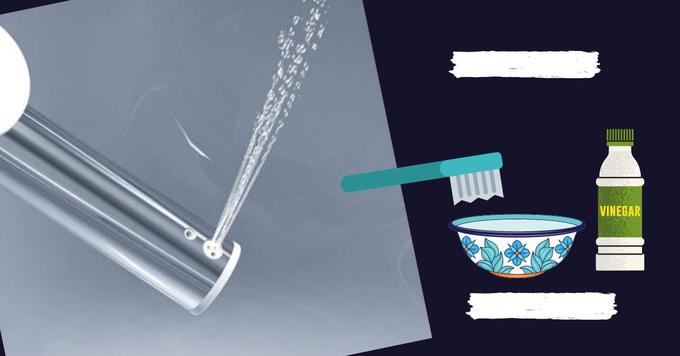
To keep your bidet nozzle pressure strong, you need to clean the bidet nozzle in a specific interval of time because with the regular use of a bidet, and its nozzle pressure gets weekend due to many reasons like accumulation of stains, dirt, and grime.
"It is mandatory to clean your bidet nozzle once a month."
A bidet nozzle is a device that is used for cleaning the genital and anal areas after using the toilet. It is typically attached to a bidet or a toilet seat, and works by spraying a stream of water to clean the area.
There are two main types of bidet nozzles: the built-in or integrated bidet nozzle, which is attached to a dedicated bidet fixture, and the handheld bidet nozzle, which is a separate nozzle that can be attached to a toilet or held in the hand.
How to clean a bidet nozzle?
Here’s how to do it:
Step-1. Detach the Filter from its mounting.


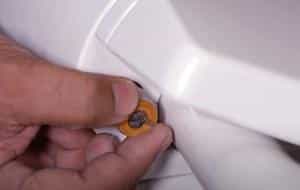
The first step is to detach the bidet filter. Use a wrench(put a cloth in the wrench’s grip) to slightly open the mounting hose connected with the bidet attachment or seat. Overlap a toil or a cloth over the connector to avoid any harm to the bidet hose connector.
Step-2. Remove the bidet nozzle from its mounting.
Now, remove or detach the bidet nozzle; most bidets have a release button or lever that you can press or pull to detach the nozzle from its mount.
Step-3. Use a cleaner agent to clean the nozzle and filter
It is time to clean the bidet nozzle and the filters with a cleaning agent. You can prepare a cleaning agent by yourself by mixing vinegar and water. Or purchase a bidet cleaning agent from stores or online (AMAZON). Use a toothbrush or soft cloth to clean the bidet nozzle and filter with the cleansing agent.
Step-4. Rinse the nozzle with water.
Use clean, running water to rinse away any dirt or debris on the outside of the nozzle. Pay special attention to the area where the nozzle mounts to the bidet, as this is a common place for dirt and grime to accumulate.
Step-5. Disinfect the nozzle.
Use a mild disinfectant or antibacterial soap to clean the outside of the nozzle. Be sure to rinse the nozzle thoroughly with water after cleaning it with disinfectant.
Step-6. Soak the nozzle in vinegar.
Vinegar is an excellent natural disinfectant, and soaking the nozzle in a vinegar solution will help to remove any lingering bacteria. To do this, simply fill a bowl or sink with equal parts water and vinegar and place the nozzle in the solution. Let it soak for at least 30 minutes, then rinse it with clean water.
Step-7. Flush the bidet.
Once you have finished cleaning the nozzle, it’s essential to flush the bidet to remove any soap or disinfectant residue. This will help to prevent irritation when using the bidet.
With the use of bidets, you get a significant advantage in staying clean and saving money on toilet paper. By following these simple steps, you can ensure that your bidet nozzle is always clean and bacteria-free.
Benefits of cleaning your bidet nozzle.
Cleaning your bidet nozzle has many benefits. Some of these benefits include:
preventing the spread of bacteria and other germs
- reducing bad odors
- extending the life of your bidet nozzle
- keeping your bathroom clean and hygienic.
Cleaning your bidet nozzle is integral to maintaining a clean and hygienic bathroom. By following these simple steps, you can ensure that your bidet is always clean and bacteria-free. Thanks for reading!
Other ways to clean your bidet nozzle
In addition to the steps above, you can do a few other things to keep your bidet nozzle clean. Here are a few tips:
- Use distilled vinegar instead of white vinegar. Distilled vinegar is less likely to leave behind residue and is more effective at killing bacteria.
- Use a toothbrush to clean hard-to-reach areas. A toothbrush can help to reach small crevices and corners that may be difficult to clean with a cloth or sponge.
- Rinse the nozzle with boiling water. Boiling water is an excellent way to sterilize the bidet nozzle and is also great for removing stubborn dirt and grime.
By following these simple tips, you can ensure that your bidet nozzle is always clean and bacteria-free. Thanks for reading!
Summing Up- How to clean bidet nozzle
In conclusion, cleaning your bidet nozzle is an essential part of maintaining a clean and hygienic bathroom.
By following the steps outlined above, you can ensure that your bidet nozzle remains clean and free of bacteria, preventing the spread of germs and reducing bad odors.
Additionally, keeping your bidet nozzle clean can help to extend its life and maintain its water pressure.
Remember to clean your bidet nozzle regularly to ensure that it continues to function properly and provide you with a comfortable and hygienic bathroom experience.
FAQs-cleaning your bidet nozzle
How often should I clean my bidet nozzle?
It’s generally recommended to clean your bidet nozzle at least once a week. However, if you have pets or children in the home, you may need to clean it more frequently.
What is the best way to clean my bidet nozzle?
There are many ways to clean a bidet nozzle, but the most important thing is to use a method you’re comfortable with. Some people prefer to use vinegar, while others prefer to use boiling water. Ultimately, the best way to clean your bidet nozzle is whichever way works best for you.
Can I use bleach to clean my bidet nozzle?
Bleach is not recommended for cleaning a bidet nozzle. Bleach can damage the finish on the nozzle and is also unnecessary for killing bacteria. Vinegar or boiling water will do the job just as well.
How often should I clean my bidet nozzle?
It is recommended to clean your bidet nozzle at least once a month to maintain optimal hygiene and water pressure.
Can I use any cleaning agent to clean the bidet nozzle and filter?
It is recommended to use a mild cleaning agent such as vinegar and water or a bidet cleaning agent specifically designed for bidets to clean the nozzle and filter.
How do I detach the bidet filter and nozzle?
To detach the bidet filter, use a wrench with a cloth wrapped around it to avoid damaging the hose connector. To detach the nozzle, look for a release button or lever on the bidet and press or pull it to remove the nozzle.

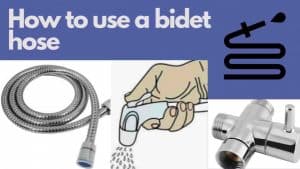
![11 Best Handheld bidet sprayer for toilet in 2024 [Reviewed and Tested]](https://homequipments.com/wp-content/uploads/2022/11/Best-Handheld-Bidet-Sprayers-250x131.jpg)
